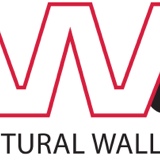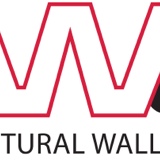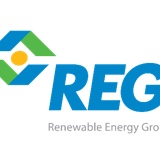Information
-
Audit Title
-
Client / Site
-
Document No.
-
Conducted on
-
Prepared by
-
Location
-
Personnel
-
Overview Job Pictures
-
General Audit Comments or Observations:
Explanation of audit scoring
-
All of the following audit questions will be answered in one of three ways:
"Yes" (Green color) - 2 points
(The jobsite performance met or exceeded expectations for this specific audit question.)
"Improve" (Yellow color) - 1 point
(The performance generally met expectations, but some specific improvements are needed.)
"No" (Red color) - 0 points
(The performance failed to meet expectations, or a serious violation was identified.)
If an audit question does not apply to the jobsite's activities, the auditor will select N/A for "not applicable", and no score will be added or subtracted from the audit. (The auditor will typically select to omit these questions from the final audit report.)
PPE (Personal Protective Equipment)
-
Are employees wearing hard hats 100% of time, per AWS policy?
-
Are all employee's hard hats in good condition (and none older than 5 years)?
-
Are safety glasses (with wrap-around or side shields) worn 100% of time, per AWS policy?
-
Are employees wearing appropriate safety glasses for their environment and conditions (no sunglasses in dark areas, no fogging, no defects)?
-
Have face shields been selected for appropriate hazards (grinding, drilling overhead, etc.)?
-
Are welding shields being used (if necessary), and are they in serviceable condition?
-
Have employees selected goggles instead of safety glasses for appropriate hazards (chemical splash, dusty environments, etc.)?
-
Are employees wearing cut-resistant gloves when their task involves laceration hazards?
-
Are employees wearing cut-resistant sleeves when working around laceration hazards (demo, plate glass, etc.)?
-
Are employees wearing leather gloves when their task involves puncture hazards?
-
Are employees wearing appropriate chemical-resistant gloves while handling chemicals and adhesives?
-
Are employees wearing work clothing that is professional-looking and climate appropriate?
-
(If required by worksite conditions or policies) Are all employees wearing high visibility clothing?
-
Are employees wearing work boots that comply with AWS and worksite safe work practices?
Administrative
-
Are labor law postings available and posted in an accessible place?
-
Are the Safety Data Sheets (MSDS/SDS documents) on site for every potential chemical exposure?
-
Do employees know where the site plan & safety data sheets are located, and can they access them?
-
Has a site safety plan been developed and followed during installation?
-
Are the Morning Huddles being conducted and documented correctly?
-
Have all employees participated in the daily stretch & flex before the start of work?
-
Are emergency postings visible, and employees know where to find them?
-
Are the first aid kit accessible, well stocked, and up-to-date?
Housekeeping
-
Does the site have good sanitation practices in place (clean toilet facilities, potable water, regular waste removal)?
-
Have all waste products, trash, and debris been placed in dumpsters or designated waste recepticles?
-
Have employees removed all loose metal strapping and placed them into garbage or recycling bins?
-
Have employees removed (or bent over) all nails and other puncture hazards from crates and dunnage?
-
Are all material stacked or stored (and restrained - if necessary) in a neat, orderly, and professional manner?
-
Have employees kept the aisle ways and walking surfaces clear of debris?
-
Have all electrical cords been removed from ground, and are all tripping hazards removed or clearly identified?
-
Have all possible "Struck-by" or "Caught-in-between" hazards been clearly identified with DANGER tape to prevent injuries to personnel in the affected area?
-
Have all other housekeeping hazards been appropriately addressed and resolved?
Fall Protection
-
Has the site fall protection safety and installation plan been communicated to the affected employees?
-
Is the fall arrest equipment in good working order (fully functional, no defect or damage, etc.)?
-
Are fall harnesses worn correctly, with appropriate connection devices (SRL, TurboLite, lanyard, etc.) attached to adequate anchorage points (able to withstand 5,000 lbs force or an engineered safety factor of two times the potential force of a fall)?
-
Are any pre-engineered fall protection systems being used correctly & in maintained in good condition?
-
Have all affected employee been trained on the proper use of personal fall protection systems?
-
Have all working surfaces that are elevated more than 6' been properly guarded or protected against fall hazards?
-
Are all employee (within 15' of a leading edge) protected by a guardrail or personal fall arrest system?
-
Have control access zone warning line systems been erected in 15' perimeter around all leading edge areas (that aren't properly guarded)?
Scaffolds
-
Do scaffolds contain only manufacturer designed components, with no mixing or substituting of parts?
-
Are the scaffolds erected on stable ground and leveled with appropriate base plates, mud sills, or casters in place?
-
Are scaffolds erected no higher than four times the minimum base width?
-
Are the scaffolds fully planked (if used for employee access)?
-
When necessary, do all scaffolds have outriggers, tiebacks, or other engineered support devices installed?
-
Are all scaffolds (6' tall or higher) fully protected by guard rails (top rail and mid rail or equivalent protection)?
-
Have toe boards been installed on scaffolds over 10' high and in areas with exposure to pedestrians?
Swing Stage Scaffolds
-
Have swing stage scaffolds have been set up by trained qualified employees?
-
Have documented swing stage inspections been completed before each day's use?
Support Systems
-
Are the support systems set up according to manufacturer's recommendations and AWS Safe Work Practices?
-
Are outrigger beams and counterweights properly secured?
-
Are tiebacks set up at right angles (or at opposing angles for each tieback) to the face of the building?
-
Are tiebacks secured to a structurally sound point of anchorage (not vents, electrical conduit, or pipes)?
-
Is the system directly bolted to a designated structure on the roof or secured by tiebacks?
-
Are parapet clamps properly mounted to a structurally sound parapet wall?
-
Are all lifeline systems anchored independently from the support system?
-
Are all lifelines, electrical cords, etc. properly guarded against damage from sharp edges or heat?
-
Are measures taken to prevent electrocution hazards due to rain, water puddles, etc. near all electrical cords?
Suspension & Tieback Wire Ropes
-
Are wire ropes free from kinks, rust, thinning spots (loss of > 1/3 the original diameter) or other physical damage?
-
Are they protected from physical damage due to heat, electrical contact, or sharp edges?
-
In one lay (approximately 8 times the diameter) of the wire rope, are there less than six random broken wires?
-
In one lay, are there less than three broken wires in one strand?
-
Within one foot from an eye on a wire rope, are there less than 2 broken wires in 1 strand?
-
Are all wire ropes steel core, and are they properly sized for the brake and hoist mechanisms?
-
Do all wire rope connections have "thimbles" in place?
-
Are the ends of all ropes (wire rope or fabric rope) seized, brazed, or terminated to prevent them from unraveling?
-
Are all components made in the USA and stamped with the manufacturer's name and rating (no "CHINA" parts)?
-
Are all shackles double-locking (or tightly wired shut - if rigging shackles were the only option)?
Stage Unit & Motor Assemblies
-
Does the stage (scaffold unit) have all its safety features in place, with the guardrails installed at a proper height?
-
Do the electrical cords have proper stress relief devices and rubber "boots" in place to protect the connections?
-
Have emergency brake systems been tested before the shift, and are they operating properly?
-
Can the employees correctly identify the safe loading limit of the stage?
-
Has the total load of workers and materials been kept within the safe loading limit of the stage?
-
Is the stage properly secured against lateral movement (lashing the railing to a hand cup, etc.)?
-
Do employees understand the rescue plan, and can they explain how to enact the plan in an emergency?
-
Are all employees tied off to a vertical lifeline, and are the lifelines free from entanglements?
-
Are lockout / tagout procedures being followed for defective or damaged equipment?
Power Tools
-
Are assured grounding kits readily available to the employees?
-
Have assured grounding tests been conducted on all tools and extension cords in use (correct color zip ties in place)?
-
Are all manufacturer-recommended guards properly mounted and used?
-
Are all manufacturer-recommended handles properly mounted and used?
-
Do all power tools visually appear to be in good working order (no obvious physical defect)?
-
Are the switches operating properly (move freely, and don't get hung up)?
-
Are all batteries in good working order (no cracks, corrosion, broken, or taped-up parts)?
-
Are extension cords plugged into GFCI-protected outlets?
-
Is adequate electrical service available for the power tools (no overloaded or "daisy-chained" cords)?
-
Have lockout / tagout procedures been used for defective tools or extension cords?
Cranes (and Gantry Cranes)
-
Has a documented crane pick plan been completed?
-
Are the crane pads fully secure (hardwood, correct dimension for pad, serviceable condition)?
-
Is the equipment being operated by an authorized NCCO Operator?
-
Is the operator lifting below 75% Critical Lift capacity, or is an (Risk Management Department) approved plan in place?
-
Has the documented annual "third party" crane inspection been completed?
-
Is the maintenance and greasing of the crane current?
-
Is only ONE designated signal person being used at a time?
-
Is the crane signal person qualified, and are the correct crane signals being used?
-
Have the operator and signal person agreed about the signal communications prior to starting the lift?
-
Gantry cranes have been inspected before each day's use, and they are functioning free from defect?
Rigging
-
Has all rigging hardware been manufactured in the USA?
-
Are rigging shackles, hooks, and lifting accessories operating freely and in good working order?
-
Are wire rope slings free of kinks, signs of "bird caging", excessive wear, corrosion, or defect?
-
In one lay (approximately 8 times the diameter) of the wire rope, are there less than six random broken wires?
-
In one lay, are there less than three broken wires in one strand?
-
Within one foot from an eye on a wire rope, are there less than 2 broken wires in 1 strand?
-
Are tags present on all slings all that list the manufacturer and the recommended safe working load?
-
Are synthetic slings in a safe condition (no tears, no visible red stripe, no UV damage)?
-
Are rigging hardware and slings used correctly and within capacity?
Power Cup Units
-
Have all power cup units receive documented inspected before each day's use?
-
Are the power cup units operating properly, and are they free from obvious physical damage or defect?
-
Do the cup units rotate freely (when the pin is pulled), and does the pin properly lock back into place?
-
Are power cups properly protected against damage while not in immediate use (cups covered with fabric skirts)?
-
Are power cups units disassembled and stored properly in their packing crates when they are not needed?
Fire protection
-
Are all flammable chemical containers properly labeled?
-
Are flammable safety cans used for flammable liquids (other than secondary containers intended for one day's use)?
-
Do all flammable safety cans have a flash / spark arrestor in place?
-
Are flammable chemical containers stored in a properly engineered flammable cabinet?
-
Have all other issue related to flammable chemicals been properly addressed?
-
Are fire extinguishers posted near all flammable storage areas and hot work zones?
-
Do all fire extinguishers have a tag demonstrating they have received a documented annual inspection?
-
Are all fire extinguishers in good working order (pin and tamper seal present, good pressure, hose unobstructed)?
Powered Machinery
-
Are documented inspections completed before each day's use?
-
Are all pieces of powered industrial equipment operating well without leaks or obvious signs of physical defect?
-
Have all attachments been approved by the equipment manufacturer?
-
Are all attachments secured from movement?
-
Are all pieces of powered industrial equipment being operated in compliance with safe work practices?
-
Are all equipment operators trained on its proper use and authorized by AWS?
-
Are employees following lockout / tagout procedures for all defective powered industrial equipment?
Near Misses
-
Have employees documented Near Miss events on the Daily Acknowledgement or "First Reports" forms?
-
Can employees adequately explain the definition of a Near Miss incident?
-
Have the employees been active in identifying Near Miss incidents and potential corrective actions?
-
Are identified corrective actions still in place for recent Near Miss incidents?
Uncommon Issues
-
Have all other recognized risks been identified and promptly resolved?
-
Auditor Signature









